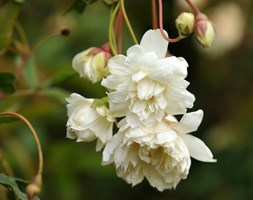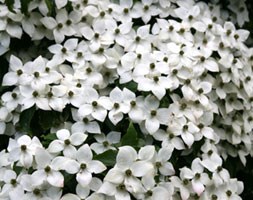Price reductions at Crocus
by Sarah - January 4th, 2014.Filed under: Crocus, Price Reductions.
Reduced products at Crocus
Rosa banksiae var. banksiae (rose (rambler)) was £19.99 now £14.99
Position: full sun Soil: fertile, humus-rich, moist, well-drained soil Rate of growth: average to fast-growing Flowering period: April and May Flower colour: creamy white Other features: small, pale green leaves Hardiness: frost hardy (needs winter protection) This beautiful rambling rose produces clusters of small, double, creamy-white flowers which have a delicious violet scent. Flowering earlier than many other roses (in April and May), it is best suited to a sunny site away from cold winds. Its slender near-thornless stems are ideal for training over an arch or pergola. Garden care: If planting in winter, choose a frost-free spell when the soil is not frozen. Roses are quite deep-rooted plants so dig a deep hole roughly twice as wide as the plants roots and mix in a generous amount of composted organic matter. A top-dressing of a general purpose fertiliser can be worked into the surrounding soil and we also recommend using Rose Rootgrow at this stage to encourage better root development. This is particularly important when planting into a bed where roses have previously been grown as Rose Rootgrow is said to combat rose sickness (aka. replant disease). Before planting you will also need to make sure that there is adequate support for the rose to grow onto. Remove the plants from their pots and gently spread out the roots before placing them in the centre of the hole. Try to ensure that the ‘bud union’ (the point where the cultivated rose has been grafted onto the rootstock, and from where the shoots emerge) is at soil level. You can judge this quite easily by laying something flat, like a spade handle or bamboo cane, across the top of the hole. When they are at the right height, back-fill the hole, firming the soil down gently before watering the plant well. Tie the stems to the support in and open fan shape and as new shhots emerge, tie these in horizontally. Water generously until well established, and apply a specialist rose fertiliser (following the manufacturers instructions) each spring. They will also benefit from a generous mulch of composted farmyard manure in spring, but make sure this is kept away from the stems. When your rose has filled the allotted space, one in three of the oldest stems can be cut right back to their base. In smaller areas, remove all the stems that have flowered, tie in new stems to replace them, and then shorten the side-shoots of the remaining stems by
Cornus kousa var. chinensis (Chinese dogwood) was £24.99 now £19.99
Position: full sun to part shade Soil: fertile, humus-rich, well-drained, neutral to acid soil Rate of growth: slow-growing to average Flowering period: May to June Hardiness: fully hardy This is a real showstopper of a tree, with two main seasons of interest. Broadly conical in shape, it produces tiny green flowers in June, which are surrounded by showy, creamy-white, petal-like bracts, that fade to lovely shades of pink as they age. In autumn the dark green leaves turn crimson-purple, and mature trees produce strawberry-like fruits. It’s an excellent specimen tree for a small garden or woodland edge, and the leaf colour is best in fertile, well-drained, neutral to acid soil. Garden care: Incorporate a good amount of well-rotted leafmould when planting. Requires minimal pruning once established, although as it is naturally low-branching and shrubby, you may need to clear a short, single stem when young. This should be tackled when the plant is fully dormant from autumn to early spring.








